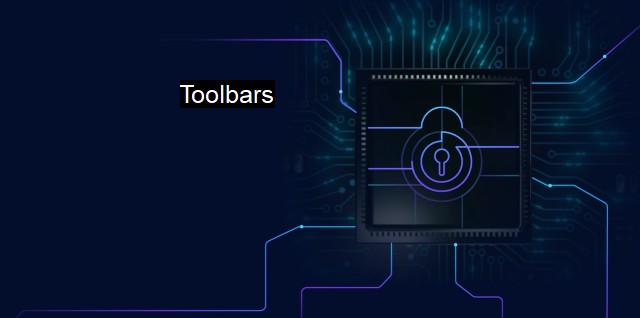What are Toolbars?
The Benefits and Risks of Toolbars: Simplified Access or Cybersecurity Threats?
A toolbar is a significant feature in various software applications, including internet browsers, with potential security implications. It appears as a graphical control element traditionally displayed as a row, column, or block of selectable on-screen buttons or icons. In browsers or antivirus programs, toolbars provide easy access to commonly used features for navigation, management, and controlling user settings, serving as an interface between users and the rest of the software applications.Understanding toolbars is essential because they often play a significant role in system vulnerabilities. Although they're designed to improve user experience, some toolbars are malicious or can be utilized for harmful purposes. Cybercriminals have designed rogue or malicious toolbars to look just like legitimate ones, tricking users into installing them on their systems. Once installed, these rogue toolbars can perform various malicious activities, including identity theft, display of unwanted ads, changing user settings without consent, or managing network traffic, which compromises data and information security.
Malicious toolbars often fall under the category of Potentially Unwanted Programs (PUPs). Not considered malware in naming conventions and legal sense, they’re still harmful to user systems. PUPs cover spyware, adware, browser hijackers, scamware, and toolbars. These malicious toolbars share features with normal toolbars such as shortcuts to different functionalities, but in reality, they contribute negatively to users' security.
Some alert signs of malicious toolbars include unexpected changes such as to the browser’s appearance, homepage settings being altered, and unusual amounts of popup ads or new toolbars appearing without any prior installation consent. In more elaborate scams, these toolbars can collect information about browsing behavior and relay it to cybercriminals, posing a severe threat to user privacy.
One way that these harmful toolbars are often distributed is through software bundles. These bundles contain numerous programs wrapped up together, with many being unwanted programs. Users often inadvertently install these bundled toolbars when installing freeware or shareware. Besides, they can be pushed through malicious emails attachments, drive downloads, or even download attacks exploiting software vulnerabilities.
Antivirus programs have an essential role in detecting and eliminating malicious toolbars. A robust antivirus program regularly scans a computer system and blocks the execution of harmful codes that might exist in malicious toolbars. Advanced antivirus software not only relies on recognizing virus "signatures" but also uses intelligent threat-detection algorithms to detect unknown threats.
Many antivirus programs have specialized toolbar protection features, providing extensive scanning features, and analyze potential threats associated with toolbars. The real-time protection commonly found in reputable antivirus software ensures users are instantly protected from malicious activities.
Growing awareness about cybersecurity also prompts developers to create more secure toolbars. For instance, Google's toolbar for its Chrome browser comes with tools such as phishing and malware protection that help users identify risky websites or downloads.
While toolbars are essential components of browsers and software applications, they can be potential cybersecurity vulnerabilities if not properly managed. Cybersecurity-conscious organizations and individuals should continuously monitor and control the toolbars they use. They should invest in reliable and robust antivirus software that helps to detect, prevent, and remove malicious toolbar installations. They should also practice safe online behavior, like careful downloads and steering clear of suspicious programs or links. All these efforts contribute towards achieving a safer and more secure cyber world against the evolving threats and challenges.

| | A | | | B | | | C | | | D | | | E | | | F | | | G | | | H | | | I | | | J | | | K | | | L | | | M | |
| | N | | | O | | | P | | | Q | | | R | | | S | | | T | | | U | | | V | | | W | | | X | | | Y | | | Z | |
| | 1 | | | 2 | | | 3 | | | 4 | | | 7 | | | 8 | | |||||||